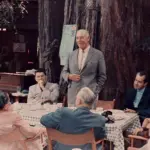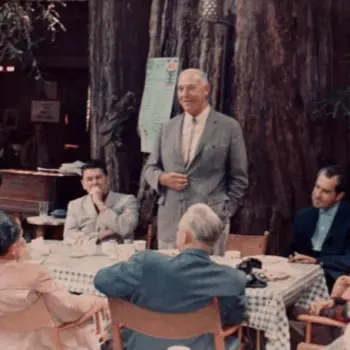Lord Julian Fellowes, the renowned creator of the television series “Downton Abbey” and “The Gilded Age” portrays a time when society displayed a reserved and modest demeanor. Both series depict a time in history when exhibiting good manners was the expected social standard. Therefore, both men and women were known for their courtesy, respect, and politeness.
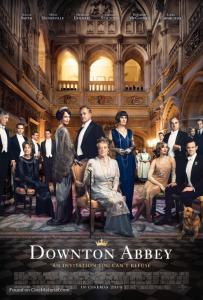
During the 19th and 20th centuries, known as The Gilded Age (HBO) in America, affluent women adorned themselves in opulent fabrics and vibrant colors, covering every part of their body except their face. It was also a time when American women took great care of their appearance. Also, women during that time were well-mannered and showed respect in public. Even working women, despite earning modest wages, always tried to present themselves with grace and dignity, doing their best to look their finest.
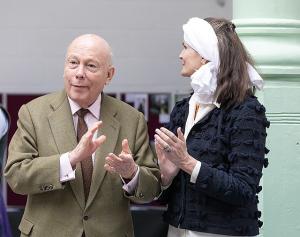
The Gilded Age. A Time When Women and Men Were Respectful.
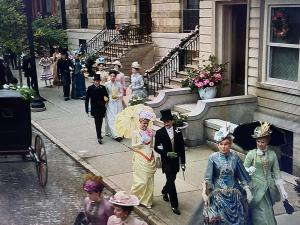
The Gilded Age. A Time of Grace and Dignity.
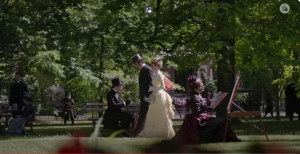
“The Gilded Age” premiered in January 2022. Julian Fellowes selected upstate New York among other locations on the East Coast to film The Gilded Age. The production team filmed scenes in Albany, Cohoes, and Troy, NY for seasons 1 and 2. Albany, NY is located about three hours north of Manhattan. The cast wore custom made Gilded Age attire, including corsets, bonnets, and bustles, with men dressed mainly in wool. Both cast and crew often endured 97-degree weather during fourteen-hour shooting days.
A Deep Dive Into the Costumes of HBO’s “The Gilded Age” — Broadway Stages (broadway-stages.com)
Modern American Women and Men – Unleash Their Beast
The splendor of the Gilded Age, however, has long since faded in the United States. This change has become more obvious in recent decades reflecting major shifts in societal attitudes and norms. Today, Americans have become a less civil and “unhinged” since they have been granted more freedoms, so it seems.
Regrettably, this pursuit of freedom and equality appears to have led to the exaggeration of individual egos, resulting in decreased self-awareness, in addition to feeding an illusory sense of self. As American women and men gain greater freedom, many chose to express themselves by dressing provocatively while exuding uninhibited sensuality.
Now, do not misunderstand me, there is an unseen, accurate definition of true freedom—a freedom that is granted by the Highest God. I am referring to the freedoms that are provided by the government in America. If we look back at history the past reveals significant changes; however, this progression seems to have led to a decline in moral values in the United States. This decline is particularly noticeable in the entertainment and music industry.
In 2019, Professor Cecelia Tichi published a book titled “What Would Mrs. Astor do?” Her book explores the manners and habits of the New York socialites in during the Gilded Age. However, during the past four decades, American women have experienced significant social changes, leading to increased freedom and choice.
A Few Tips from the Guidebook on Manners from— the Gilded Age ♥
Where The Right Clothes.
The guidebook Manners, Culture and Dress of the Best American Society (1891) covered men’s and women’s wardrobes for all kinds of social interactions. For a morning visit, women should wear “a dress with a closely fitting waist.” A smart hostess, meanwhile, would want to dress in “rich material, but subdued in tone … in order that she may not eclipse any of her guests.” Men were similarly required to change clothes often, and always for dinner. But remember: “Never dress above your station.” It leads to “great evils, besides being proof of an utter want of taste.”
Keep it chivalrous.
During the Gilded Age, women were constricted by having to keep their skirts out of mud while not showing too much ankle. This was no easy feat since getting out of the way of horses (and manure), rubbish and motor cars required the aid of a gentleman to make it onto the curb. A man always respectfully acknowledged every lady of his acquaintance, even when gripping reins and a whip while driving a carriage.
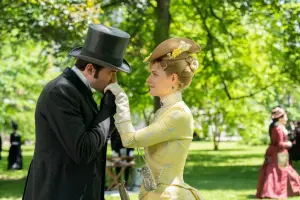
Shhh. Quiet.
Quiet decorum was the norm in conversations at the dinner table, on the street or in shops—everywhere except at a sporting event or at the circus, where the noise level required speaking loudly enough to be heard. To call attention to oneself in any way was considered gauche. Seating at dinner parties necessitated that attendees mix with old and young to “prompt a ‘social salad’ of bright conversation,” and talking to “inferiors” was always governed by politeness and consideration.



